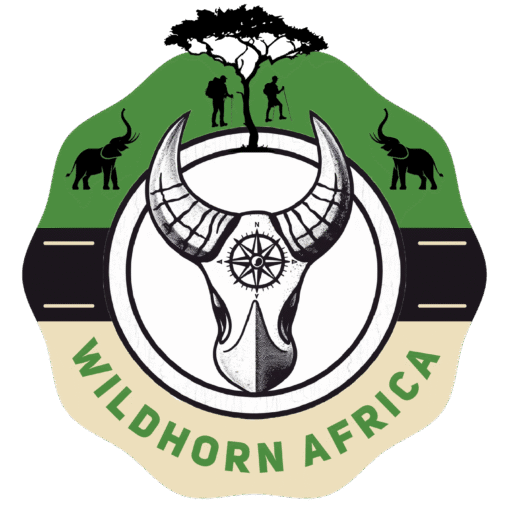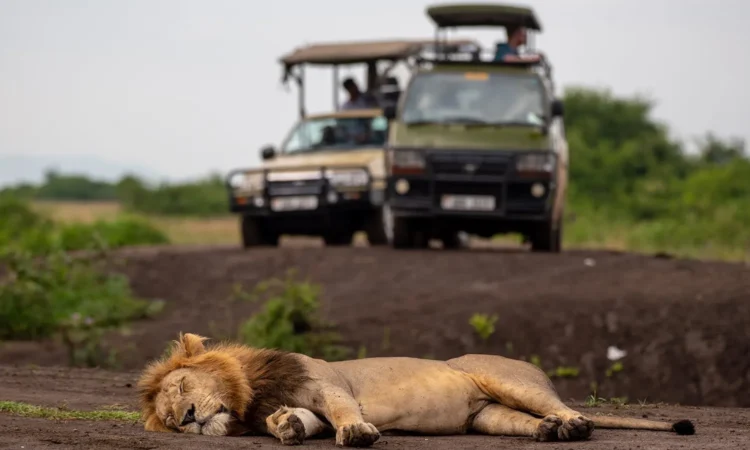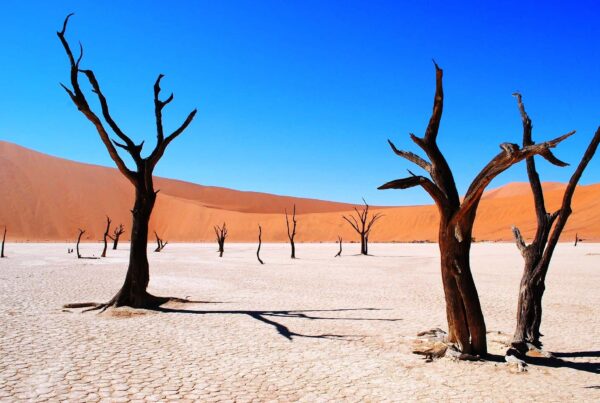Wildlife Conservation Challenges in Uganda and How Travellers Can Help | WildHorn Africa
Uganda, the “Pearl of Africa,” sits at the heart of East Africa’s biodiversity, where lush rainforests, sprawling savannahs, and shimmering lakes converge into one of the richest wildlife landscapes on the continent. From the majestic mountain gorillas of Bwindi Impenetrable National Park to the roaring lions of Queen Elizabeth and the thundering Murchison Falls on the Nile, Uganda’s ecosystems sustain an extraordinary range of life. Yet beneath this natural splendour lies a pressing reality — Uganda’s wildlife is under increasing threat. The delicate balance between people and nature faces unprecedented challenges driven by human pressures, climate change, and limited resources.
This article explores the key conservation challenges facing Uganda and the meaningful role travellers can play in safeguarding this precious heritage. It offers a deeper, structured perspective that merges factual depth, conservation insight, and practical awareness, ensuring readers understand not just what is at stake, but how their journeys can be part of the solution.
The Fragile Beauty of Uganda’s Natural Heritage
Uganda is home to more than half of the world’s remaining mountain gorillas, over 1,000 species of birds, and a diverse range of mammals including elephants, leopards, chimpanzees, and hippos. These species live across a mosaic of ecosystems—from tropical forests like Bwindi and Kibale to wetlands such as the Mabamba Swamp, and the great savannah plains of Murchison Falls and Kidepo Valley.
Each region plays a critical ecological role, serving as a reservoir of life, a carbon sink, and a source of livelihoods for local communities. However, this intricate web is increasingly strained by human expansion, illegal wildlife trade, and environmental degradation. The paradox is clear: as Uganda grows economically and demographically, its wild places are shrinking.
To understand how travellers can help, one must first examine the deep-seated challenges facing conservation in Uganda today.
1. Habitat Loss and Fragmentation
One of the gravest threats to Uganda’s wildlife is habitat loss. Expanding farmlands, urban sprawl, and infrastructural development continue to encroach upon forests, wetlands, and grasslands. The country’s population has soared past 48 million, and with this growth comes an increasing demand for agricultural land and settlement space.
National parks and reserves, once vast and connected, are now fragmented into isolated patches. This fragmentation prevents animal migration and breeding, reducing genetic diversity and increasing human-wildlife conflicts. For example, elephants migrating from Queen Elizabeth National Park to Kyambura Gorge often encounter farms, resulting in crop destruction and retaliatory killings.
In forested regions such as Bwindi and Kibale, local communities rely heavily on the forests for fuelwood, honey, and building materials. As the forests shrink, wildlife like chimpanzees and gorillas find themselves in closer contact with humans, heightening the risk of disease transmission and further conflict.
Without sustainable land-use planning, Uganda risks losing critical wildlife corridors that connect parks and reserves, which are essential for the long-term survival of many species.
2. Poaching and Illegal Wildlife Trade
Despite stringent laws, poaching remains a pervasive threat to Uganda’s wildlife. Although large-scale elephant poaching has decreased since the 1980s, bushmeat hunting and the illegal trade in wildlife products continue to thrive. In some communities, bushmeat is seen as a source of protein and income, making enforcement a challenge in rural areas.
Species such as pangolins, grey parrots, and leopards are especially vulnerable to trafficking. The global demand for exotic pets, traditional medicine, and ornamental products drives this trade underground. Even protected areas like Queen Elizabeth National Park and Murchison Falls National Park are not immune, with poachers exploiting porous borders and limited ranger patrols.
The Uganda Wildlife Authority (UWA) has made commendable efforts, from increasing ranger training to deploying surveillance drones, yet the fight remains uphill. Weak penalties, corruption, and inadequate funding undermine enforcement. Until communities view wildlife as an economic asset rather than competition or prey, poaching will remain difficult to eliminate.
3. Human-Wildlife Conflict
Uganda’s human-wildlife conflict is a complex and emotional issue. In regions bordering national parks, people and animals often compete for space and resources. When elephants raid crops, lions prey on livestock, or hippos trample gardens, families face devastating economic losses.
This tension fosters resentment toward conservation authorities and sometimes leads to retaliatory killings. Such conflicts have been particularly severe in areas adjacent to Queen Elizabeth, Kidepo, and Murchison Falls national parks. For subsistence farmers, one night’s raid by elephants can erase an entire season’s income.
Efforts to mitigate conflict — such as community fencing, chilli deterrent programs, and compensation schemes — have shown promise but require consistent funding and engagement. Conservation success in Uganda will ultimately depend on creating coexistence models where people benefit from protecting wildlife, not suffer from it.
4. Climate Change and Environmental Degradation
Climate change poses a silent but escalating threat to Uganda’s biodiversity. The country’s ecosystems are finely tuned to predictable weather patterns, but rising temperatures and erratic rainfall are altering that balance.
Wetlands are drying up, forest fires are increasing, and droughts are becoming more frequent. Species that depend on specific habitats — like the shoebill stork in marshlands or mountain gorillas in misty forests — are being forced to adapt or relocate.
For example, Lake Mburo and Queen Elizabeth National Parks have recorded fluctuations in water levels, impacting hippos and crocodiles. In highland areas like Rwenzori and Bwindi, the changing climate affects plant species that serve as key food sources for gorillas.
Climate-induced habitat shifts also drive people into conservation areas seeking fertile land, amplifying pressures on fragile ecosystems. The cumulative impact of climate change may not be as visible as poaching, but it is equally destructive and far more insidious.
5. Limited Funding and Institutional Capacity
Conservation in Uganda is expensive and underfunded. The Uganda Wildlife Authority relies heavily on tourism revenue, which collapsed during the COVID-19 pandemic. This financial strain led to staff layoffs, reduced patrols, and a spike in illegal activities.
Even in recovery, funding remains inconsistent. Many parks lack adequate equipment, vehicles, and monitoring technology. Rangers, who risk their lives daily, often work under difficult conditions with limited resources.
International NGOs and donor programs have been instrumental in supporting projects, but long-term sustainability depends on domestic investment and community-driven initiatives. Without predictable funding streams, conservation remains vulnerable to external shocks.
6. Population Pressure and Land Use Conflicts
Uganda’s rapidly growing population exerts enormous pressure on natural resources. Rural communities, dependent on agriculture, continue to expand into wildlife habitats. The tension between conservation goals and human needs is particularly evident in Albertine Rift regions, where fertile soils attract settlers but overlap with biodiversity hotspots.
As farmlands push deeper into forest zones, protected areas like Budongo and Kibale face encroachment. Unregulated charcoal burning and deforestation compound the problem. The challenge lies in balancing human development with environmental protection — a balance that requires inclusive planning, education, and economic alternatives.
If unchecked, the encroachment could isolate Uganda’s parks, reducing them to biological “islands” unable to support viable wildlife populations in the long term.
7. Disease Transmission Between Humans and Wildlife
Another emerging concern is zoonotic disease transmission, especially in regions where humans and primates coexist closely. Gorillas and chimpanzees share over 98% of their DNA with humans, making them highly susceptible to respiratory infections and viruses.
Tourism brings immense conservation funding, but it also introduces the risk of disease spread if guidelines are ignored. During the pandemic, Uganda’s gorilla parks temporarily closed to protect the apes, underscoring the fragility of this coexistence.
Sustainable tourism practices — maintaining a safe distance, wearing masks, and limiting visitor numbers — have been implemented to mitigate risk. Yet as tourism rebounds, vigilance remains vital to prevent outbreaks that could decimate primate populations.
 8. Weak Community Involvement and Benefit Sharing
8. Weak Community Involvement and Benefit Sharing
For conservation to succeed, local communities must benefit from it. Historically, many people living around parks have felt excluded from decision-making processes and revenue distribution. This exclusion fuels resentment and non-cooperation.
Community-based conservation projects, such as revenue-sharing programs, eco-tourism ventures, and village tourism associations, are reshaping this dynamic. However, implementation gaps persist. Some communities still receive minimal benefits compared to the economic value tourism generates.
Where people see tangible returns — through jobs, infrastructure, or education — they become active stewards of conservation. Uganda’s future lies in expanding these inclusive models, ensuring that conservation is not perceived as an external imposition but as a shared livelihood.
9. Infrastructure Development and Industrial Pressure
Uganda’s development agenda includes large-scale projects such as road expansions, hydroelectric dams, and the oil extraction program in the Albertine Graben. While essential for economic growth, these projects pose significant environmental risks if not carefully managed.
Roads fragment habitats, pipelines disrupt wetlands, and oil exploration threatens sensitive ecosystems like Murchison Falls National Park. Environmental impact assessments are sometimes overlooked or inadequately enforced, resulting in long-term ecological damage.
Balancing national development and conservation requires transparent governance, rigorous oversight, and sustainable alternatives that prioritize both nature and progress.
How Travellers Can Help Safeguard Uganda’s Wildlife
While the challenges are immense, travellers play a crucial role in shaping the future of conservation. Every responsible journey has the potential to create a ripple effect — supporting local economies, financing conservation, and inspiring global awareness.
Choosing Responsible Tour Operators
Travellers can amplify their impact by booking with eco-conscious tour operators who prioritize sustainability, community involvement, and conservation ethics. Responsible companies invest directly in local initiatives, support anti-poaching efforts, and employ community guides who serve as ambassadors for wildlife protection.
By selecting trusted partners such as WildHorn Africa, visitors ensure that their travel dollars contribute to positive conservation outcomes rather than exploitation.
Supporting Community Tourism
Community tourism initiatives allow travellers to experience Uganda authentically while empowering local people. Home stays, cultural encounters, and community walks not only enrich the visitor experience but also provide alternative incomes that reduce reliance on poaching or deforestation.
When local communities earn through conservation, wildlife becomes their shared treasure rather than a threat.
Respecting Wildlife and Park Regulations
Responsible travel extends beyond financial support — it includes ethical behaviour. Maintaining safe distances, avoiding noise disturbances, not feeding animals, and following park guidelines help minimize human impact on wildlife.
Travellers who adhere to these principles contribute to the wellbeing of species like mountain gorillas and chimpanzees, ensuring minimal stress and maximum protection during encounters.
Offsetting Carbon Footprints
As global travel contributes to carbon emissions, visitors can reduce their ecological footprint by choosing carbon offset programs, supporting tree planting projects, or opting for low-impact travel modes within Uganda.
Contributing to reforestation efforts around Bwindi, Kibale, or Murchison Falls not only offsets emissions but also helps restore degraded habitats vital to wildlife survival.
Spreading Awareness and Advocacy
Tourists can become ambassadors for Uganda’s wildlife. Sharing authentic stories, photographs, and conservation messages helps educate others and inspire responsible travel choices. The ripple effect of informed advocacy can influence global attitudes and generate lasting support for Uganda’s conservation agenda.
The Role of Government and International Partnerships
While travellers play a significant role, sustainable conservation requires collaboration between governments, NGOs, researchers, and communities. Uganda’s policies, such as the Wildlife Act and the Community Conservation Strategy, provide a strong foundation, but implementation depends on sustained partnerships and funding.
International alliances with organizations like the World Wildlife Fund (WWF), Conservation Through Public Health (CTPH), and Jane Goodall Institute continue to provide technical expertise and resources. However, the long-term success of conservation efforts rests on Uganda’s ability to localize these strategies, empowering citizens as active custodians of nature.
A Shared Future Between Humans and Nature
Uganda’s story is one of resilience and rebirth. Decades of poaching and deforestation have taken their toll, yet the country has shown extraordinary recovery through community empowerment, gorilla tourism, and international collaboration.
The sight of a mountain gorilla mother cradling her infant in the misty hills of Bwindi or a herd of elephants crossing the Kazinga Channel at sunset remains a symbol of hope — proof that when nature is protected, humanity thrives too.
The future depends not on whether Uganda can save its wildlife, but whether people — both Ugandans and travellers — can see themselves as part of the same ecological family. Each visit, each conscious choice, becomes an act of preservation for generations yet to come.
The Call to Action
Uganda’s wildlife is not merely a national treasure; it is a global legacy. Protecting it requires empathy, awareness, and shared responsibility. As travellers explore the Pearl of Africa, their decisions shape the future of its forests, rivers, and plains.
By choosing to travel responsibly, support conservation-focused operators, and engage with local communities, visitors become part of a movement that transcends borders. Every safari becomes more than an adventure—it becomes a commitment to ensuring that Uganda’s wild beauty endures.
For those inspired to witness this wonder firsthand while contributing to its preservation, the journey begins with a choice — a choice to book your African tours and safaris with WildHorn Africa, where every expedition supports conservation, uplifts communities, and honours the wild heart of Africa.





 WildHorn Africa – Authentic and unforgettable tours across Africa, guided by local experts who know the land, wildlife, and culture best.
WildHorn Africa – Authentic and unforgettable tours across Africa, guided by local experts who know the land, wildlife, and culture best.


